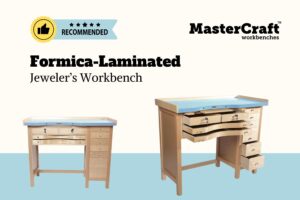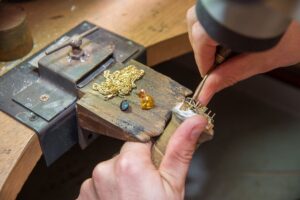Creating a custom piece of jewelry is an emotional and artistic journey, and selecting the right gemstones plays a vital role. Here’s how you can guide your clients through this crucial decision:
Symbolism and Meaning
Every gemstone carries a unique meaning, so consider its significance when designing custom pieces. For instance, birthstones like garnet (January) or emerald (May) are popular for personalized jewelry. Gemstones often symbolize emotions or events, so knowing what’s meaningful to your client can steer the design in the right direction.
Clients might also want gemstones associated with love (like ruby or rose quartz), protection (black onyx or amethyst), or even health and prosperity (jade or turquoise). Ask about their personal stories, values, and occasions to help pick the perfect stone.
Durability and Practicality
Durability is a key factor, especially for pieces worn daily, like engagement rings or bracelets. Educate clients on the Mohs hardness scale, which measures a gemstone’s ability to resist scratching. Diamonds (10 on the Mohs scale) are the hardest, making them ideal for everyday wear, while softer stones like opal (5.5-6) require more careful handling.
For clients seeking durability without compromising on beauty, sapphires (9) and rubies (9) are great alternatives to diamonds. Understanding the stone’s toughness will help set realistic expectations for long-term wear.
Color and Cut
The color of a gemstone can transform the entire piece. Help clients explore various color options within their chosen stone family. For instance, sapphires come in a range of hues beyond the traditional blue, including pink, yellow, and green. Discuss how different lighting conditions may affect the appearance of the stone’s color.
Next, consider the cut, which can maximize a stone’s brilliance. Offer guidance on popular cuts like round, emerald, cushion, or pear, and explain how each reflects light differently. A well-cut gemstone will enhance the overall aesthetic of the jewelry, drawing attention to its key features.
Budget
Clients often have a budget in mind, and part of your role is helping them get the most out of it. Suggest alternative stones that offer similar beauty without the high cost. For instance, moissanite or lab-grown diamonds can deliver the sparkle of a diamond at a more affordable price.
Provide transparency about pricing, weighing factors like carat size, clarity, and setting costs. This will help clients make informed decisions while staying within their financial range.
Ethical Sourcing
More clients are looking for ethically sourced gemstones, particularly those that are conflict-free or have minimal environmental impact. Offering transparency about your suppliers and sourcing methods can build trust. Consider partnering with suppliers who provide certified gemstones that align with fair trade and ethical mining practices.
By helping your clients make informed decisions about gemstones, you not only create a beautiful piece of custom jewelry but also ensure that it has personal significance and long-lasting quality. Using high-quality tools and workstations, such as those available at MasterCraft Workbenches, ensures that each gemstone is set with precision and care, bringing your client’s vision to life.
Need some inspiration? Check out other blog posts!
Browse Jeweler's Workbenches
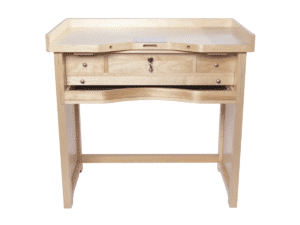
Featured
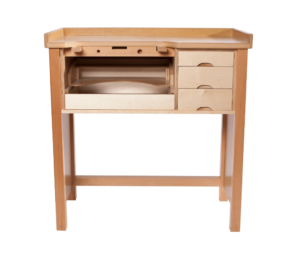
Small Workbenches
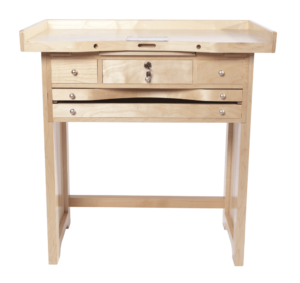
Small Workbenches

Small Workbenches


